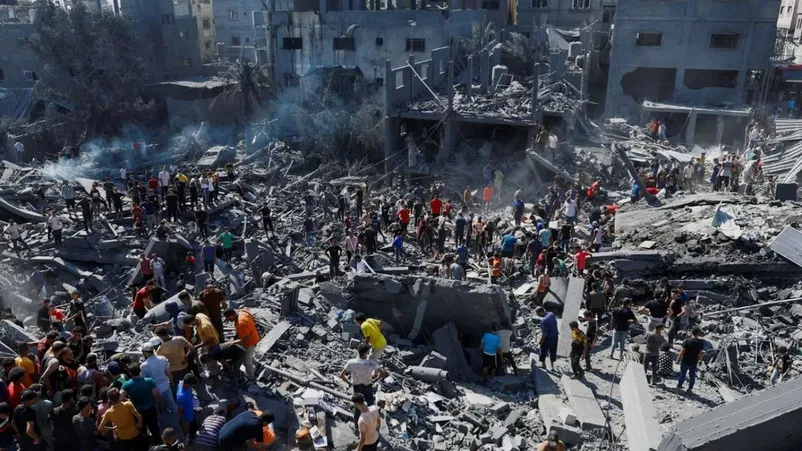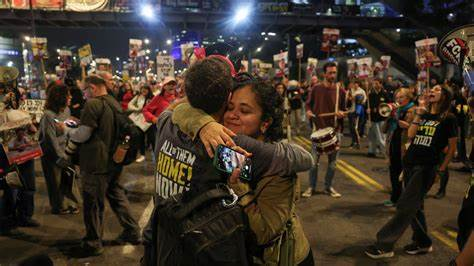A ceasefire is a temporary halt to fighting, and when it happens between Israel and its adversaries, it brings hope for peace. The recent ceasefire agreement in Israel has captured global attention. But what exactly does this mean for those involved? Let’s break down the facts.
What is a Ceasefire?
A ceasefire is when both sides of a conflict agree to stop fighting. It is often seen as a first step towards peace. Ceasefires can last for hours, days, or even weeks, but they are usually meant to allow for negotiations or humanitarian aid to reach those in need. In the case of Israel, these agreements are important for de-escalating violence and providing relief to civilians caught in the middle of the conflict.
The Israel Ceasefire Agreement
The latest ceasefire agreement in Israel came after intense fighting in the region. This period of fighting resulted in devastating effects on both sides. The ceasefire was brokered through various international efforts, and it calls for an immediate halt to hostilities. The goal is to allow both sides to regroup, assess the situation, and hopefully, negotiate for longer-term peace.
Why Was the Ceasefire Important?
The ceasefire is important for several reasons. First, it provides much-needed relief to civilians who are often the most affected by the fighting. Second, it creates a window for diplomatic talks, offering a chance for both sides to address underlying issues. Lastly, it is a signal to the world that there is still hope for dialogue, even in the most challenging conflicts.
What Happens During a Ceasefire?
During a ceasefire, military actions are paused. This allows humanitarian aid to flow freely to those in need. Hospitals can tend to the injured, and civilians can return to their homes. International organizations often step in to monitor the situation and ensure that both sides honor the agreement. However, ceasefires can be fragile and are sometimes broken if trust is lost.
The Challenges of Maintaining a Ceasefire
Maintaining a ceasefire is never easy. Tensions remain high, and small incidents can quickly escalate. Both sides may have conflicting interests and goals, making it difficult to hold the agreement in the long term. A ceasefire is just the beginning; it requires constant monitoring and dialogue to ensure it leads to lasting peace.
How the International Community Plays a Role
The role of the international community is crucial in facilitating and maintaining a ceasefire. Governments, peacekeeping organizations, and non-governmental organizations (NGOs) play an essential part in monitoring the ceasefire and offering support. Their involvement helps provide an objective perspective, ensuring that both sides adhere to the agreement and that civilian needs are addressed.

The Path Forward: Is Peace Possible?
After a ceasefire, the real challenge begins: finding a lasting solution. A ceasefire is not an end but a chance to start a meaningful dialogue. While tensions are high and deep-rooted issues exist, the possibility for peace always remains. Diplomatic efforts, careful negotiations, and the support of the global community will be key in determining whether a sustainable peace agreement is achievable.
The Impact of Ceasefire on Daily Life
For civilians, the impact of a ceasefire is immense. It offers a brief moment of relief from the ongoing violence. Families who have been separated can reunite, and those who have been hiding or displaced can return to their homes. Shops and businesses that were closed due to the conflict may also start to reopen. This temporary pause in fighting allows life to slowly begin returning to normal, although the scars of the conflict often remain.
The Role of Media in the Ceasefire
Media coverage plays a vital role in informing the global audience about the status of the ceasefire. Journalists provide real-time updates, highlighting both the successes and challenges during the ceasefire period. Their reports help keep the international community aware of the situation on the ground. Media also helps to hold both sides accountable, ensuring that promises made during the ceasefire are kept. In conflict zones, the media’s presence can be a crucial tool in promoting peace and transparency.
The Humanitarian Perspective
During any conflict, humanitarian aid becomes essential. With a ceasefire in place, aid organizations can work without the constant threat of violence. Supplies such as food, water, medical assistance, and shelter can be distributed to those who need it most. Hospitals can focus on treating the injured without the added burden of new casualties. However, this process is not always smooth, and there are often logistical challenges that need to be overcome to ensure aid reaches the intended recipients.
The Political Dimensions of a Ceasefire
A ceasefire is not just a military or humanitarian issue; it also has significant political dimensions. Leaders from both sides may use the ceasefire to gain leverage in future negotiations. Politicians will often highlight the ceasefire as a victory, regardless of the challenges it may present. At the same time, it gives leaders the opportunity to reassess their strategies and prepare for future talks. The political landscape can shift dramatically after a ceasefire, depending on how each side views the success or failure of the temporary peace.
FAQs about the Israel Ceasefire
What happens if the ceasefire is broken?
If the ceasefire is broken, fighting may resume. This could lead to further harm for civilians and a breakdown in peace talks.
Can the ceasefire lead to peace?
A ceasefire is a step towards peace, but it requires ongoing negotiations and efforts from both sides and international support.
How long does a ceasefire typically last?
Cleanspark The length of a ceasefire can vary. Some last for a few days, while others may extend for weeks, depending on the situation.
Who is responsible for monitoring the ceasefire?
Understanding International organizations, such as the United Nations, and neutral parties often monitor the ceasefire to ensure compliance.
Why is a ceasefire important for civilians?
Amy A ceasefire provides a break from fighting, allowing civilians to receive aid, return to their homes, and heal from the effects of war.
To read more, Click Here

Leave a Reply